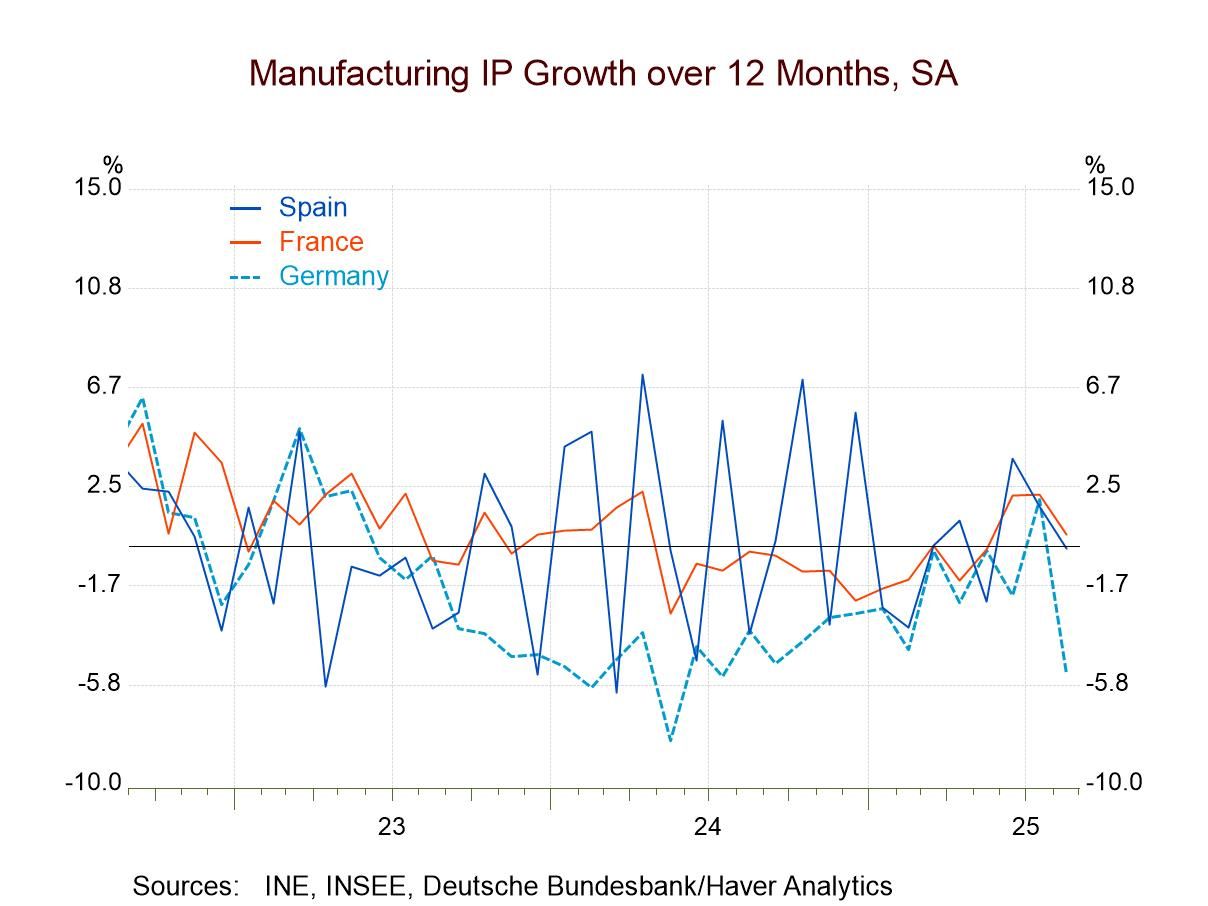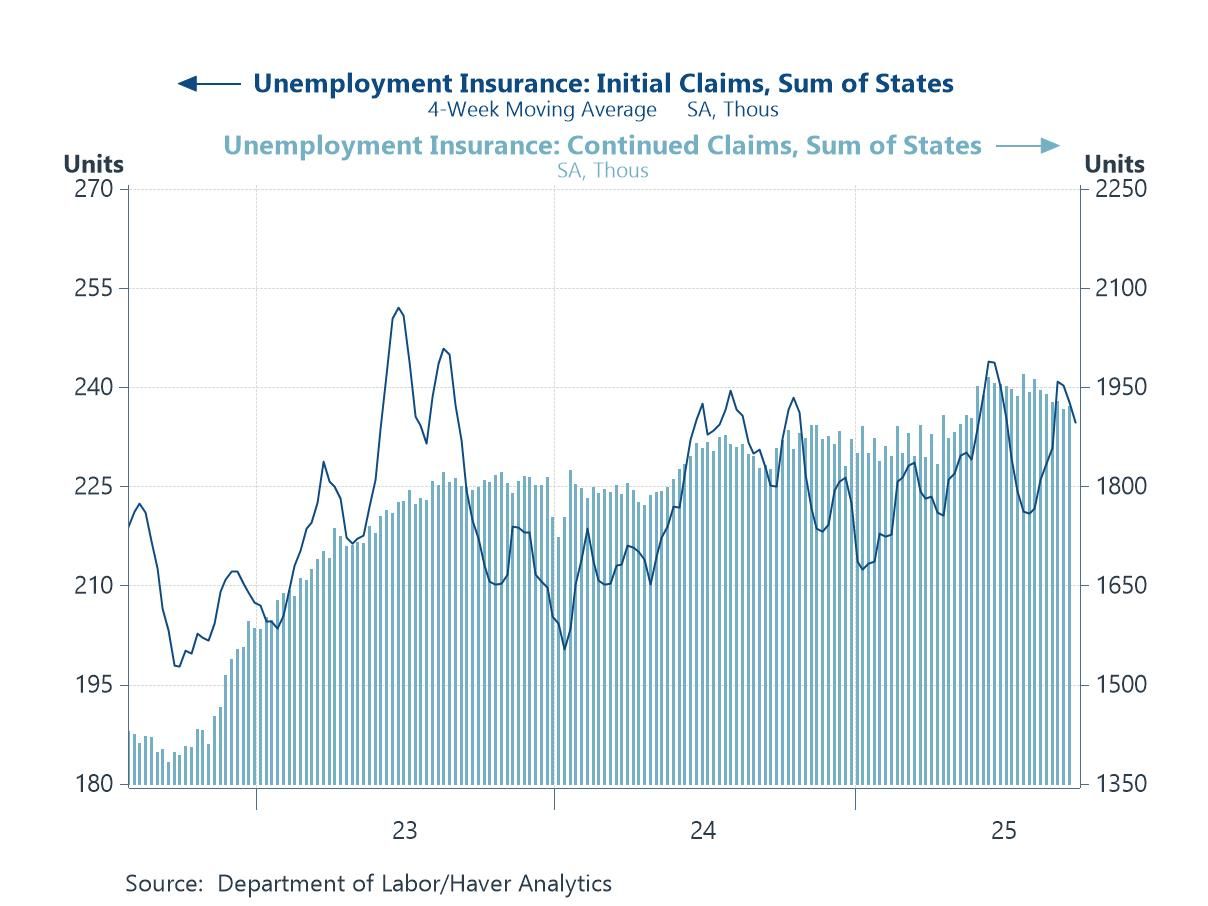 Global| May 05 2004
Global| May 05 2004ISM Non-Manufacturing Index Reached Another New High
by:Tom Moeller
|in:Economy in Brief
Summary
The Business Activity Index for the non-manufacturing sector reported by the Institute for Supply Management rose to another series' high of 68.4 in April. Consensus expectations had been for a roughly unchanged reading of 65.0 versus [...]

The Business Activity Index for the non-manufacturing sector reported by the Institute for Supply Management rose to another series' high of 68.4 in April. Consensus expectations had been for a roughly unchanged reading of 65.0 versus 65.8 in March.
Since the series' inception in 1997 there has been a 59% correlation between the Business Activity Index and the q/q change in GDP services plus construction.
The employment index strengthened to 54.5 as 21% of firms reported higher employment in April, up from 12% in 2002 and 17% last year. April was the highest employment reading since October 2000 and the ninth month in ten above 50.
Since the series' inception in 1997 there has been a 62% correlation between the level of the ISM non-manufacturing employment index and the m/m change in payroll employment in the service producing and construction industries.
The new orders index improved to 65.6, near the series' high, versus 62.8 in March.Business activity for the non-manufacturing sector is a question separate from the subgroups mentioned above. In contrast, the NAPM manufacturing sector composite index weights the components.
The seasonally adjusted prices index again was strong and rose to 68.6 from 65.7 in March. It was the second highest reading on record.
ISM surveys more than 370 purchasing managers in more than 62 industries including construction, law firms, hospitals, government and retailers. The non-manufacturing survey dates only to July 1997, therefore its seasonal adjustment should be viewed tentatively.
| ISM Nonmanufacturing Survey | April | Mar | April '03 | 2003 | 2002 | 2001 |
|---|---|---|---|---|---|---|
| Business Activity Index | 68.4 | 65.8 | 53.6 | 58.1 | 55.1 | 48.9 |
| Prices Index | 68.6 | 65.7 | 56.2 | 56.7 | 53.9 | 51.5 |
by Tom Moeller May 5, 2004

The index of mortgage applications compiled by the Mortgage Bankers Association rose 4.4% (-37.4% y/y) last week as borrowers acted ahead of potentially more significant increases in interest rates.
Purchase applications jumped 4.1% (+16.0% y/y) following a 6.8% rise the week earlier. Purchase applications for the month of April rose 3.3% versus the March average.
During the last ten years there has been a 56% correlation between the y/y change in purchase applications and the change in new plus existing home sales.
Applications to refinance rose 4.7% (-58.6% y/y) following five weeks of sharp decline.
The effective interest rate on a conventional 30-Year mortgage rose further to 6.38% from 6.27% the week prior. The average for April was 6.16% versus 5.65% averaged in March. The effective rate on a 15-year mortgage rose to 5.75% from 5.63% the week prior. The average for April was 5.54% versus 5.00% in March.
The Mortgage Bankers Association surveys between 20 to 35 of the top lenders in the U.S. housing industry to derive its refinance, purchase and market indexes. The weekly survey accounts for more than 40% of all applications processed each week by mortgage lenders. Visit the Mortgage Bankers Association site here.
| MBA Mortgage Applications (3/16/90=100) | 04/30/04 | 04/23/04 | 2003 | 2002 | 2001 |
|---|---|---|---|---|---|
| Total Market Index | 780.9 | 748.0 | 1,067.9 | 799.7 | 625.6 |
| Purchase | 482.5 | 463.5 | 395.1 | 354.7 | 304.9 |
| Refinancing | 2,516.0 | 2,403.0 | 4,981.8 | 3,388.0 | 2,491.0 |
Tom Moeller
AuthorMore in Author Profile »Prior to joining Haver Analytics in 2000, Mr. Moeller worked as the Economist at Chancellor Capital Management from 1985 to 1999. There, he developed comprehensive economic forecasts and interpreted economic data for equity and fixed income portfolio managers. Also at Chancellor, Mr. Moeller worked as an equity analyst and was responsible for researching and rating companies in the economically sensitive automobile and housing industries for investment in Chancellor’s equity portfolio. Prior to joining Chancellor, Mr. Moeller was an Economist at Citibank from 1979 to 1984. He also analyzed pricing behavior in the metals industry for the Council on Wage and Price Stability in Washington, D.C. In 1999, Mr. Moeller received the award for most accurate forecast from the Forecasters' Club of New York. From 1990 to 1992 he was President of the New York Association for Business Economists. Mr. Moeller earned an M.B.A. in Finance from Fordham University, where he graduated in 1987. He holds a Bachelor of Arts in Economics from George Washington University.






